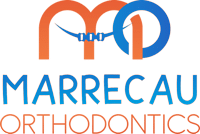Early Treatment

Early Orthodontic Treatment for Children
How are early orthodontic treatment and regular orthodontic treatment different? Why would my child need early treatment? How will early treatment benefit my child in the future?
These are only a few of the questions regarding the topic of early orthodontic treatment for children. The American Association of Orthodontists recommends that children see an orthodontist around the age of seven. During this visit, the doctor will determine if your child will need orthodontic treatment and the best time to begin the treatment.
Early treatment or Phase One treatment normally begins around the age of eight or nine while phase two typically takes place after the age of eleven. The objective of early treatment is to guide the growth of the jaw, correct certain bite problems, and make room for permanent teeth to come in properly. Early treatment reduces the probability that extractions of permanent teeth will be necessary for the future.

Signs that your child may need early orthodontic treatment:
- Early or late loss of baby teeth (your child should typically start losing teeth around age five, and will have all permanent teeth around age 13)
- Difficulty chewing and/or biting
- Mouth breathing
- Your child continues sucking his or her thumb after age five
- Speech impediments
- Protruding teeth (the top teeth and the bottom teeth extend away from each other)
- Teeth that don’t come together in a normal manner or even at all
- Shifting of the jaw when your child opens or closes his or her mouth (crossbites)
- Crowded front teeth around age seven or eight

Why do orthodontic problems develop, and how can early treatment benefit my child?
Orthodontic problems such as crowding of the teeth, too much space between the teeth, jaw growth problems, protruding teeth, and bad bites can be genetic or caused by trauma to the mouth, early or late loss of baby teeth, or thumb-sucking habits.
By age 13, most children have lost all of their baby teeth. By the end of their teen years, the jaw bones will mature, harden, and stop growing. Orthodontic corrections for adults are typically more invasive and lengthy. If a child receives early treatment, the probability of needing tooth extractions and oral surgery in the future is significantly reduced.
If your child is between the ages of seven and eight and has not been evaluated by an orthodontist, please contact our practice and schedule a consultation. This is especially important and urgent if your child is showing signs of needing orthodontic care or if you have been directed by your family dentist to visit the orthodontist. During the consultation, our doctor will perform an initial exam and discuss with you the recommended steps to best care for your child’s smile.

